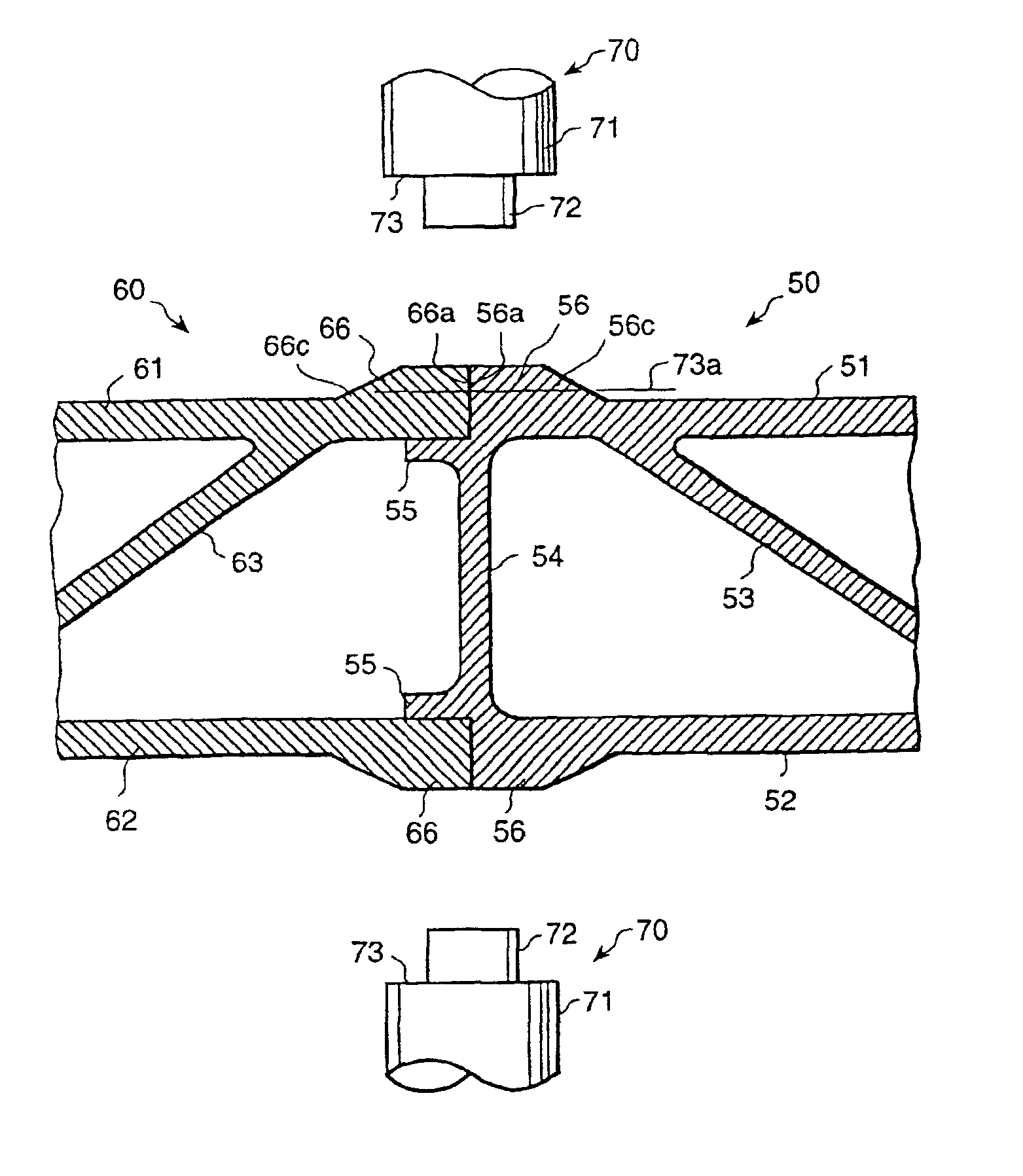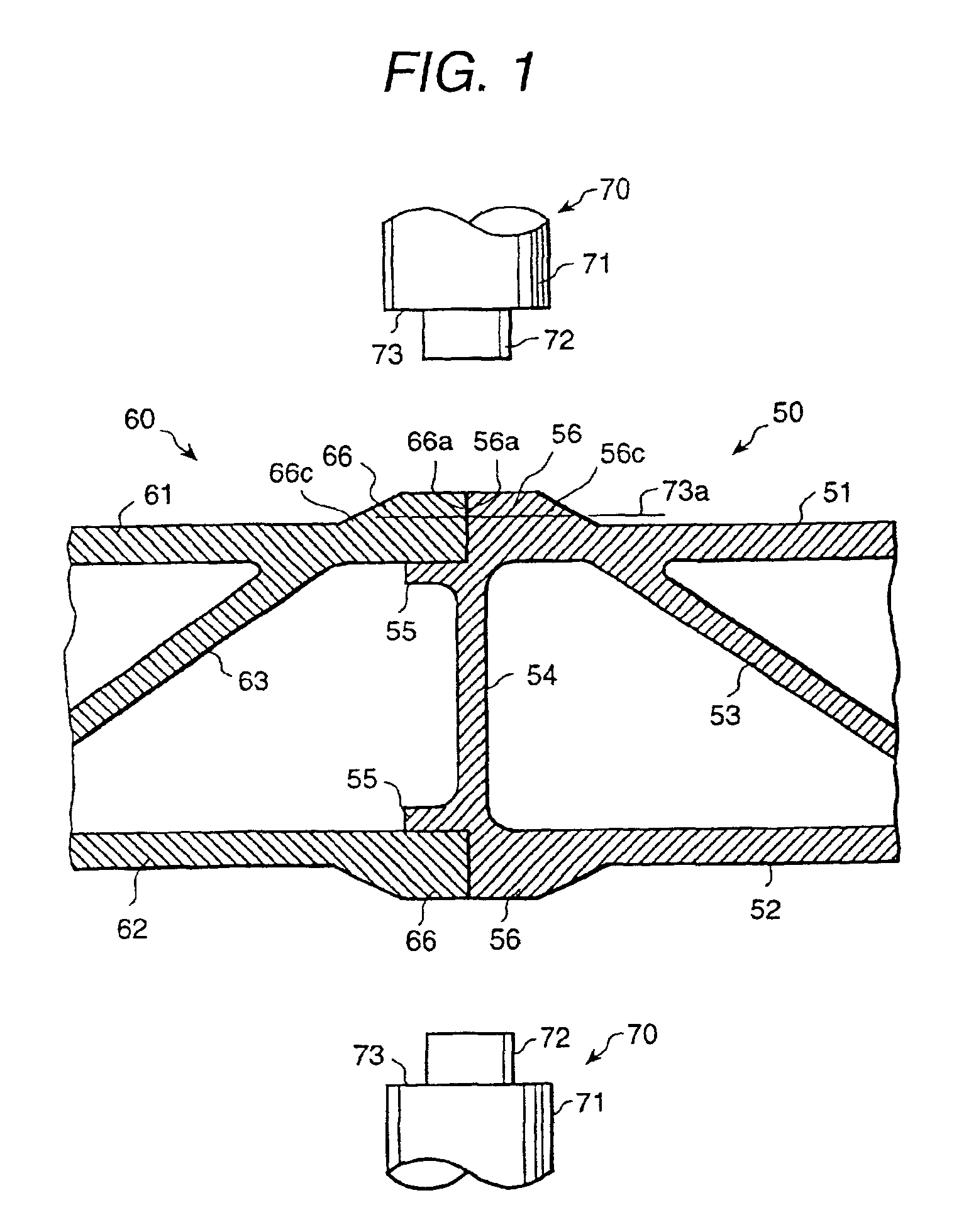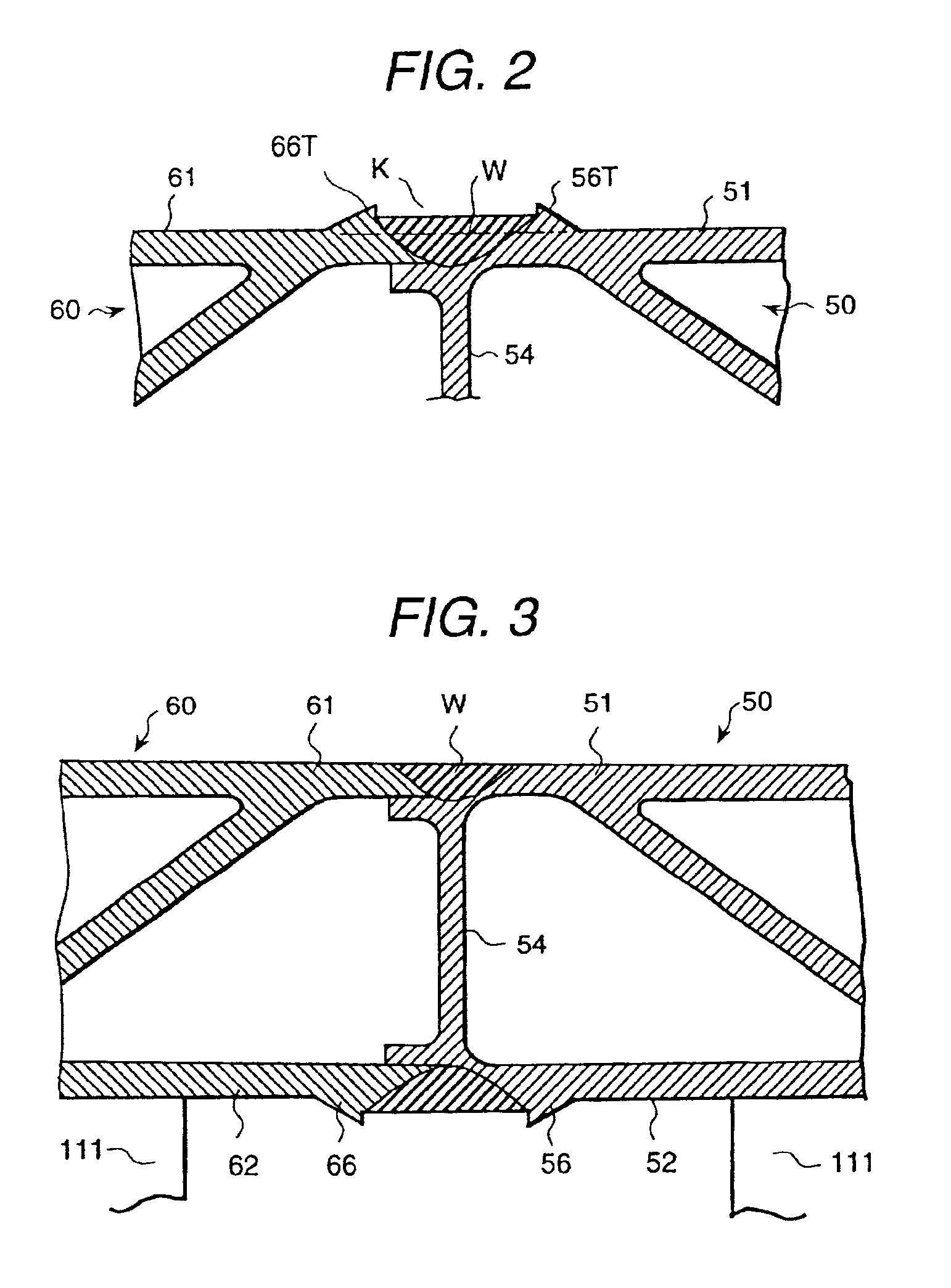Extruded frame member for use in friction stir welding
a technology of friction stir welding and frame member, which is applied in the direction of non-electric welding apparatus, non-disconnectible pipe joints, support, etc., can solve the problems of high manufacturing cost, difficult management of above-stated gaps, and lowering strength, so as to avoid a dent in the welded joint, prevent the generation of dent, and excellent weld
- Summary
- Abstract
- Description
- Claims
- Application Information
AI Technical Summary
Benefits of technology
Problems solved by technology
Method used
Image
Examples
Embodiment Construction
[0041]One embodiment of the present invention, which is an application of the present invention for a car body of railway cars, will be explained referring to FIGS. 1-5.
[0042]In FIG. 5, a car body of a railway car is comprised of a side constructive body 41, a roof constructive body 42, a floor constructive body 43, and a constructive body 44 of an end portion at a longitudinal direction. The side constructive body 41 is constituted by arranging plural hollow extruded frame members (50, 60) and by joining contacting portions thereof. The joining is carried out as shown in FIG. 1.
[0043]Each of the roof constructive body 42 and the floor constructive body 43 is constituted similarly. Connections between the side constructive body 42 and the roof constructive body 41 and the floor constructive body 43 are carried out using an MIG (metal electrode inert gas) welding, etc.
[0044]FIG. 1 shows a joint portion of a hollow frame member which constitutes the side constructive body 41. The holl...
PUM
| Property | Measurement | Unit |
|---|---|---|
| thickness | aaaaa | aaaaa |
| length | aaaaa | aaaaa |
| diameter | aaaaa | aaaaa |
Abstract
Description
Claims
Application Information
 Login to View More
Login to View More - R&D
- Intellectual Property
- Life Sciences
- Materials
- Tech Scout
- Unparalleled Data Quality
- Higher Quality Content
- 60% Fewer Hallucinations
Browse by: Latest US Patents, China's latest patents, Technical Efficacy Thesaurus, Application Domain, Technology Topic, Popular Technical Reports.
© 2025 PatSnap. All rights reserved.Legal|Privacy policy|Modern Slavery Act Transparency Statement|Sitemap|About US| Contact US: help@patsnap.com



